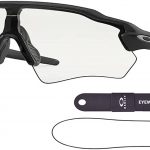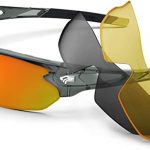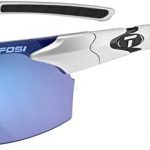Riding a mountain bike on trails and rough terrain can be an exhilarating experience. Having the right gear, like helmets, gloves, and eyewear can make your rides more comfortable and safe. When it comes to sunglasses and goggles for cycling, an important feature to consider is photochromic or transition lenses. But are these light-responsive lenses a good choice for mountain biking?
What Are Photochromic Lenses?
The term photochromic refers to eyeglass lenses that can change tint depending on the lighting conditions. Photochromic lenses contain special molecules that cause the lenses to darken when exposed to ultraviolet (UV) rays from sunlight. The lenses then lighten up when they are taken out of direct sunlight. This responsive tinting means you can have one pair of glasses or goggles that work in both bright and lower light settings.
Brands create photochromic lenses by adding different chemical coatings during production. These coatings control how quickly the lenses darken and lighten. Photochromic technology was first developed in the 1960s by researcher William H. Armistead and his team. It took a few decades for brands to perfect the tinting process and photochromic lenses only gained mainstream popularity in the 1990s. Now they are a common option for prescription eyeglasses and sunglasses.
Photochromic lenses can come in many tint shades like brown, gray, and amber when activated. The darkness of the tint depends on factors like the UV light level outside, lens material used, and brand technology. Some lenses may have up to four different layers of coatings to provide more consistent transitions across UV spectrums. High-end brands also add polarization, glare reduction, and gradient tints to enhance performance.
Why Mountain Bikers Use Them
There are some key advantages to photochromic lenses that make them appealing to mountain bikers and cyclists in general:
Convenience – You can keep one pair of sunglasses or goggles on without having to switch out lenses as lighting conditions change. Riders don’t have to fumble with spare lenses in a pack or keep shields up when descending into tree shade on single track. This helps riders concentrate on the trail.
Eye Protection – Photochromic lenses automatically darken when exposed to sunlight glare and UV rays. This helps prevent eyestrain and damage while allowing enough light through so trails remain visible. The tint adjusts as you speed under tree canopy sections, keeping vision crisp and clear.
Enhanced Visibility – Many riders feel photochromic lenses provide better visibility than standard sunglasses. They let in more usable light due to the lighter tint in low light settings. Many brands also add glare-reduction coatings and polarization that helps define terrain details. The right photochromic lens optimizes contrast and depth perception.
Adaptability – The responsive tint allows one pair of goggles or glasses to work in diverse settings. You can tackle sunny ridges, shaded forests, and long transition zones without compromising vision safety. This adaptability suits the variation found on cross country and enduro rides.
Weather Resistance – Solid photochromic lenses hold up better in wet conditions compared to swapping out multiple lenses. Their scratch-resistance also maintains visibility after trail debris impacts. This durability suits the mud and debris encountered mountain biking.
Potential Drawbacks for Cycling
While photochromic lenses solve some problems for mountain bikers, they also come with some limitations to consider:
Cloudy Day Performance – Some brands don’t darken fully or struggle to lighten up without direct sunlight. This can make goggles less useful if stuck in flat lighting all day during overcast rides. However, high-end options with multi-layer coatings often still activate well on cloudy days.
Behind Other Lenses – Photochromic lenses won’t activate properly when behind face shields and normal eyeglasses. The plastic and glass prevent the UV rays from reaching the lenses. This means you lose responsive tinting abilities if swapping goggles out over another pair of glasses.
Speed Changes – Photochromic lenses can struggle to keep up with tint changes when rapidly accelerating out of wooded sections. They often won’t tint dark enough soon enough when blasting into sunlight. This could cause temporary vision loss that results in crashes on rough terrain. Upgraded sport lenses react faster but still need a few seconds to adjust.
Durability Concerns – Consistent trail debris impacts, crashes, and lens scratches can affect photochromic performance over time. The special coatings degrade quicker compared to standard polycarbonate lenses. Replacing lenses yearly helps maintain ideal tinting abilities.
Price – Quality photochromic lenses suited for sports tend to cost more than basic cycling sunglasses. Multi-layered high-speed lenses range from $100 to $300 depending on added features. This price may not suit beginner mountain bikers testing out the sport.
Making Photochromic Lenses Work for Mountain Biking
If you want to try using photochromic lenses for mountain biking, a few tips can help optimize performance:
Choose Faster-Reacting Lens Options – Some brands like Julbo now rate tint response times and create lenses better suited for sports. These lenses darken quicker when hitting sunlight due to upgrades in chemical coatings. Faster high-speed options better match rapid speed changes on bikes.
Allow Time to Adjust – Give lenses at least 30 seconds to one minute reach full tint when moving in and out of shadows. Don’t accelerate too quickly from shade into sun before they catch up to avoid vision loss. Consider pace and terrain before speeding up.
Bring Backup Lenses – Still pack normal sunglasses or goggles. That way you have a backup if photochromic lenses become too scratched or stop working properly during long rides. Swapping lenses takes just seconds if issues emerge.
Clean Frequently – Dust buildup, oil, scratches and debris impacts can gradually affect lens performance. Take good care of lenses by using spray cleaners and microfiber cloths. Avoid dropping goggles with lenses facing down. Small maintenance goes a long way.
Match Terrain Conditions – Make sure brand technology suits your common light conditions. Basic gray lenses work well in darker wooded settings while brown-tinted versions optimize contrast in very bright desert terrain. Know your environment when choosing.
Check Yearly for Damage – Inspect lenses before each season for clouding, scratches and impacts that may interfere with vision and UV light absorption. Consistent checks better guarantee safety. Replace as needed.
Are They Worth the Investment?
For most mountain bikers, the biggest question becomes if photochromic lenses warrant the investment over standard sunglasses. In some aspects, traditional cycling glasses can provide similar front-facing protection at a lower price point. But for riders who value versatility, photochromic lenses make handling varied trails much simpler.
Being able to tackle steep sunny ridges right after weaving through a shaded gully without worrying about spare lenses provides peace of mind. The capacity to concentrate on line choice instead of eyewear helps maintain focus and control too. The safety benefits shouldn’t go ignored either.
Ultimately photochromic lenses shine the most for all-day epic rides where lighting and speeds constantly change. If you want vision reliability mile after mile without swapping glasses, then photochromic is worth the money. Casual riders may still prefer cheaper basic lenses for shorter journeys though.
Are Improvements Still Needed?
While photochromic technology has come a long way since its invention, brands still work to enhance reaction times and durability every year. Particularly making lenses viable for speedy sports like competitive road cycling remains an issue. Mountain biking dynamics pose less of a speed challenge but there is room for improvement.
Some riders feel activated tint levels could also better match brightness levels encountered on trails. Coatings still skew slightly light for handling southwestern desert sun glare. Addressing glare and infrared radiation from angles may help fine-tune performance too.
Future photochromic lens models will likely cater more to sports applications as the demand grows. But already there are options providing all-day reliability in mixed settings under the right conditions. For most riders, photochromic lenses tick the boxes needed for safe vision.
The Bottom Line
Overall, photochromic lenses offer unique advantages but also have limitations depending on mountain biking conditions. They provide good eye protection and visibility when used right. Brand technology improvements also continue to expand usefulness for different sports.
For mountain bikers that value convenient versatility over maximizing front-facing protection, photochromic is a worthwhile investment. The capacity to adapt saves hassle and enables concentration trail-side. Just take reaction times and durability into account when purchasing models matched for terrain. With smart choices and care, photochromics tackle most mixed light settings found off-road.




